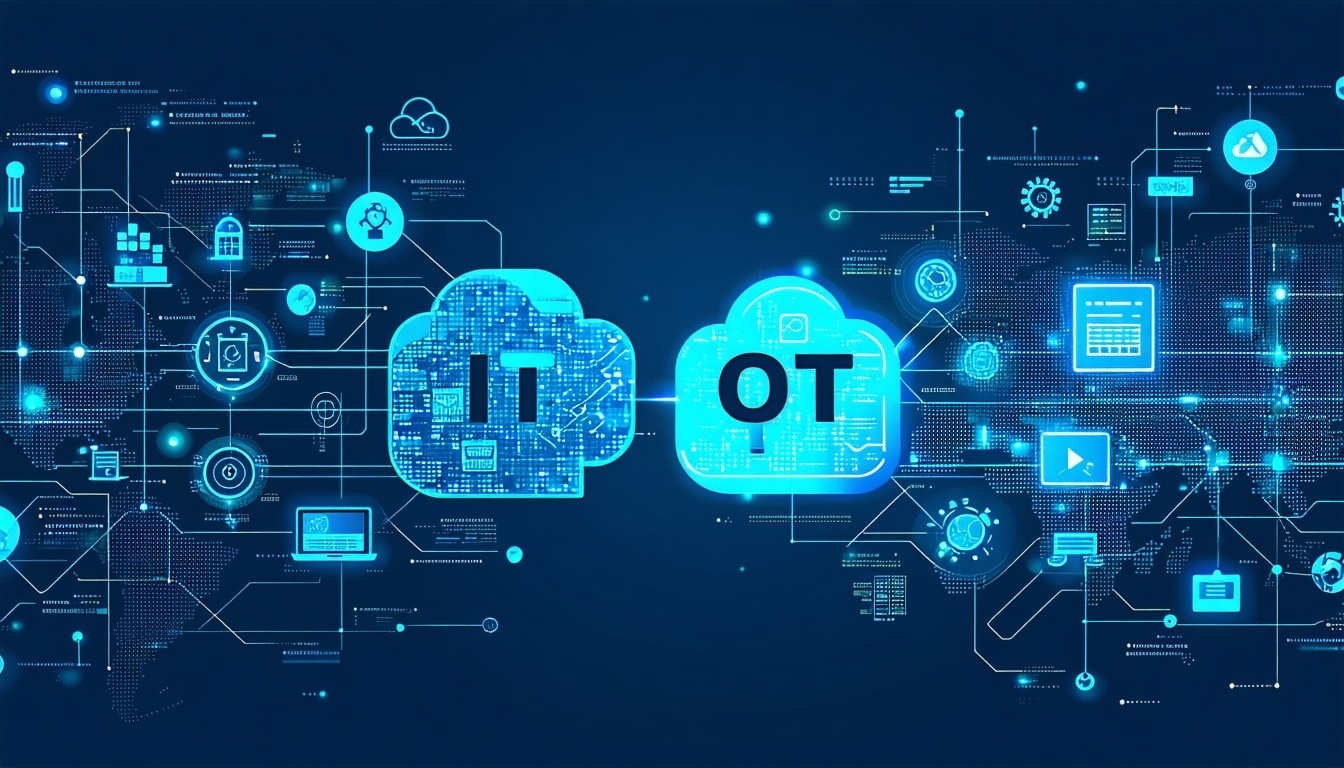
The merging of IT and OT is not just a trend; it's a revolution reshaping industries by enhancing security, optimizing processes, and cutting costs. This blog dives deep into how large companies are navigating this convergence and reaping its benefits.
Understanding the Basics of IT and OT
IT (Information Technology) and OT (Operational Technology) have traditionally operated in separate silos. IT deals with data management and applications, like ERP systems and MES, while OT focuses on monitoring and controlling physical devices in production settings. Think sensors to monitor physical devices such as manufacturing or industrial devices.
This separation made sense in the past, but as we move towards a more integrated and data-driven world, the lines between IT and OT are blurring. Integrating these two realms can lead to improved efficiency and innovation. It's not just about merging technologies but also about uniting teams and processes.
Current Progress and Challenges in IT/OT Integration
A recent study involving 31 CIOs and IT/OT managers found that while some companies are leading the charge in IT/OT convergence, others are still in the early stages. Only 13% have fully integrated their systems. Many are in the pilot phase or still conceptualizing the integration.
Challenges abound, from data sovereignty issues to decentralized OT systems, especially in global branches. Communication remains a hurdle, with many companies reporting only loose, project-based exchanges between IT and OT teams. Security, however, stands out as a common driver for convergence, with both sides recognizing the need to bolster cybersecurity.
Opportunities Unlocked by IT/OT Convergence
The integration of IT and OT offers numerous benefits. Enhanced security is a major one, with consistent rollout of updates and centralized user management. Cost savings are another, driven by standardized processes and reduced redundancies.
Moreover, the synergy between IT and OT can lead to improved transparency and better use of production-related data. This data can unlock new opportunities, from optimizing existing products to developing new, data-driven services. Companies can also benefit from better employee collaboration, fostering a culture of continuous learning and innovation.
Steps to Achieve Successful IT/OT Convergence
Achieving IT/OT convergence requires a clear vision and strategy, supported by top management. A governance framework with defined roles and standardized processes is essential. Companies should appoint central OT managers to facilitate communication and build trust between teams.
Security should be leveraged as a driver for convergence, emphasizing the need for better protection against cyber threats. It's also crucial to demonstrate the added value of convergence to OT teams, perhaps through case studies showing tangible benefits. Finally, an iterative, step-by-step approach can help ease the transition, starting with willing OT locations and gradually expanding.